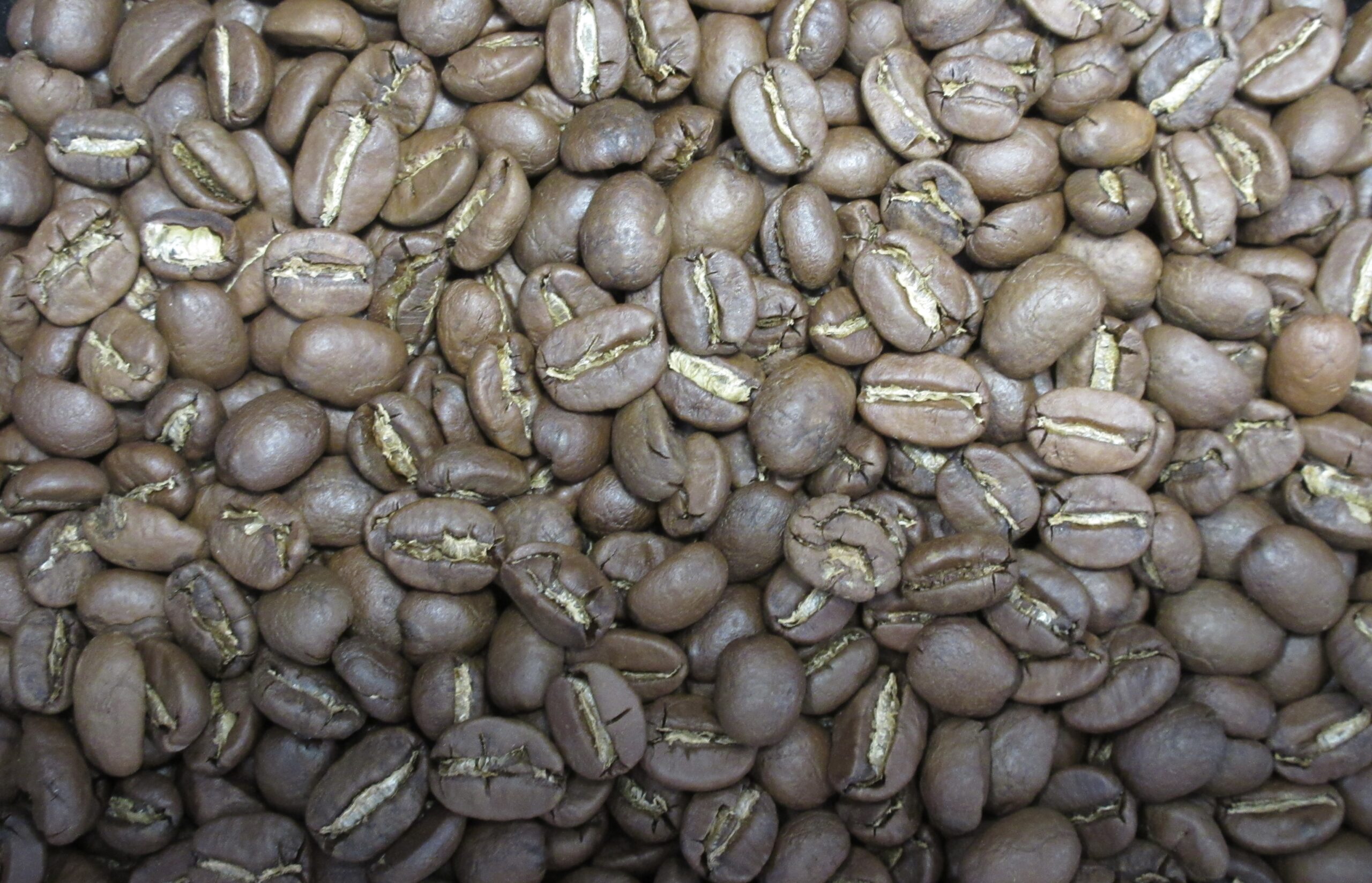
Dini Caffe- Background:
On Wednesday morning, I had the absolute pleasure of experiencing a guided tour of one of Florence’s oldest coffee roasteries, and the only roastery found inside of the city center. Located on Via Bastioni, bordering Florence’s ancient city walls, sits Dini Caffe.
Founded by Alberto Dini in 1939, Dini Caffe has been passed down through three generations. Alberto Dini, passionate about bridging the gap between the relationship of the city and quality coffee production, opened Dini’s first roastery in the historic centre of Florence. After the 1966, Flood of the Arno, which destroyed the initial location, Dini opened what is still Dini Caffe’s primary location and roastery on Via Bastioni. The company was inherited by Dini’s two daughters, Elisabetta and Laura in the 1980’s, and since 2010 has been carried on by sisters, Serena and Benedetta Nobili.
The Process of Roasting the Perfect Coffee:
Before the tour of the roastery, we were given a brief presentation of the process of roasting coffee, which added a significant layer of context to the tour. As someone who often mindlessly consumes coffee, understanding its labor-intensive processes have changed the game for my internal appreciation for this comforting cup.
Coffee beans grow between the Tropic of Cancer and the Tropic of Capricorn, which has been coined, the bean belt. Only two beans grow inside of each cherry. To put that in perspective for you, one cup of espresso requires 50 beans, or 25 cherries. They are harvested when they have ripened, often turning a bright red. Cherries will ripen at completely different times than other cherries that are attached to the same plant, making the harvesting process tedious and prolonged.
To process the coffee beans, they will use one of two methods, either a dry process or a wet process. In the dry process, the cherries are left out to dry and then separated. In the wet process, the beans are separated from the pulp and put in a water tank to ferment and then dried out. After they have been dried out, the dry mill beans are separated from the parchment layer, and the cleaned from the silver skin layer, which we got to view and feel during our introduction.
Finally, the coffee beans are ready to be exported. When the beans reach Dini Caffe, the quality is tested very thoroughly. They will roast enough beans for five cups of coffee from their batches, and taste each cup, which consists of only coffee and water to avoid disrupting variables. When they can confirm their batch is quality, the beans are finally ready to be roasted.
During the roasting process, the coffee beans go in in their small, green state, and then like are cooked. It is almost like how popcorn is cooked. When the beans reach a certain internal temperature, which is different for every batch, they crack.
After the beans have been roasted, the roastery will blend the beans with other beans to create their signature flavors and aromas. These blends are the grinded to a fine powder, which is what you normally see when you purchase coffee. This powder is then packaged and used to make some of the best, richest coffee you will ever taste.
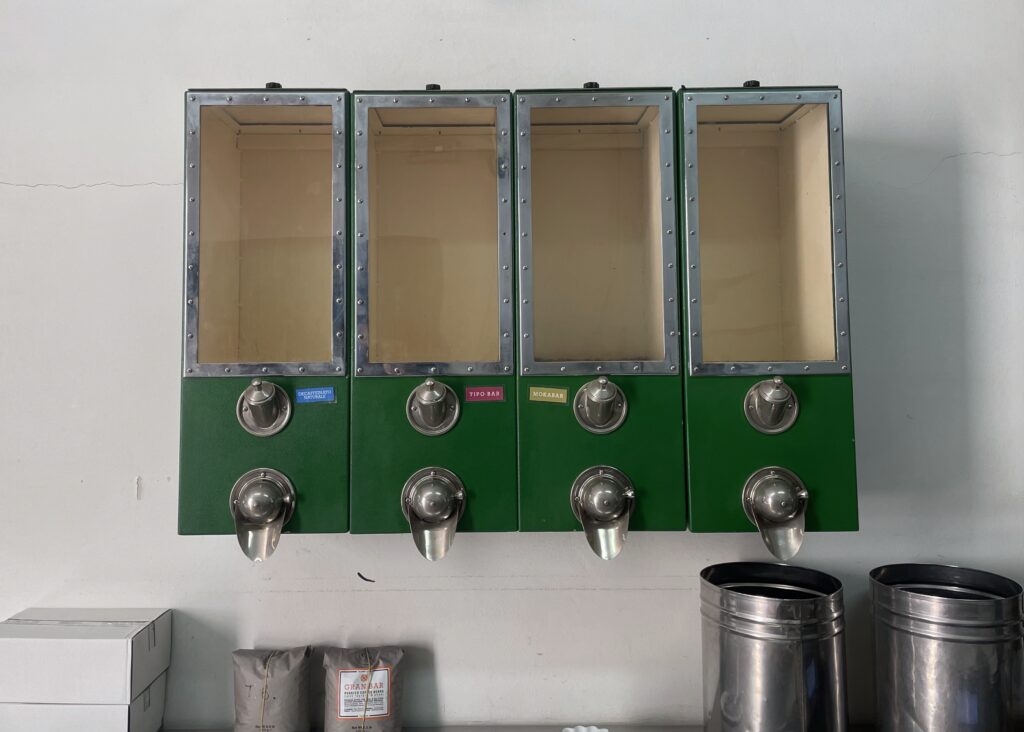
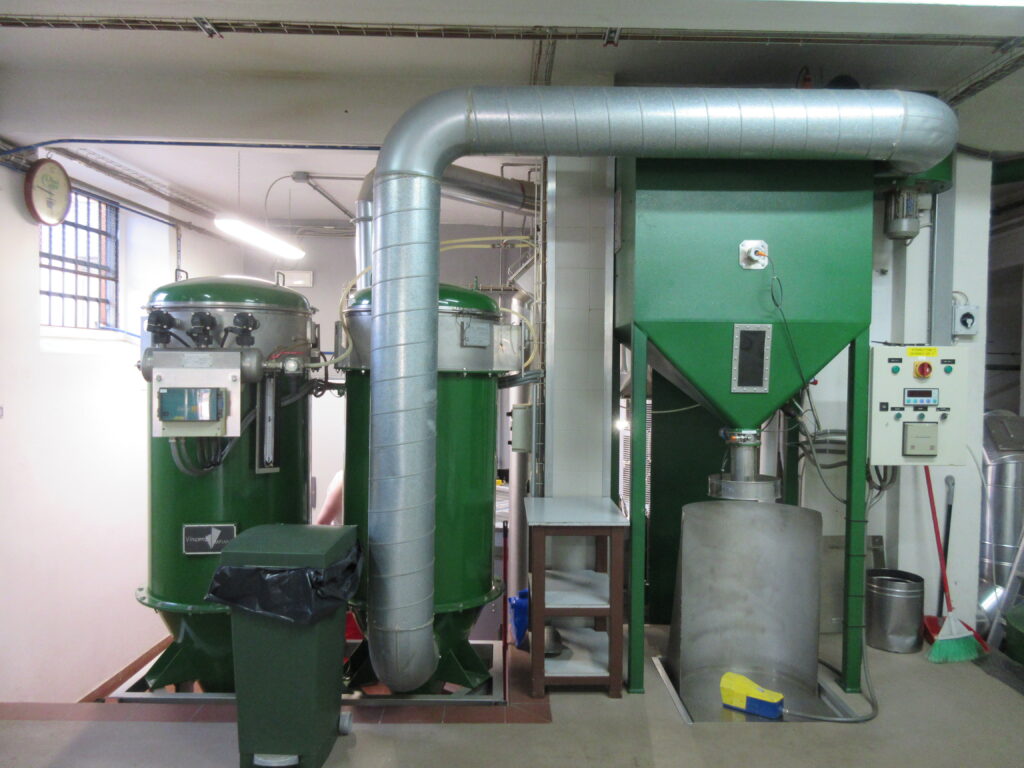
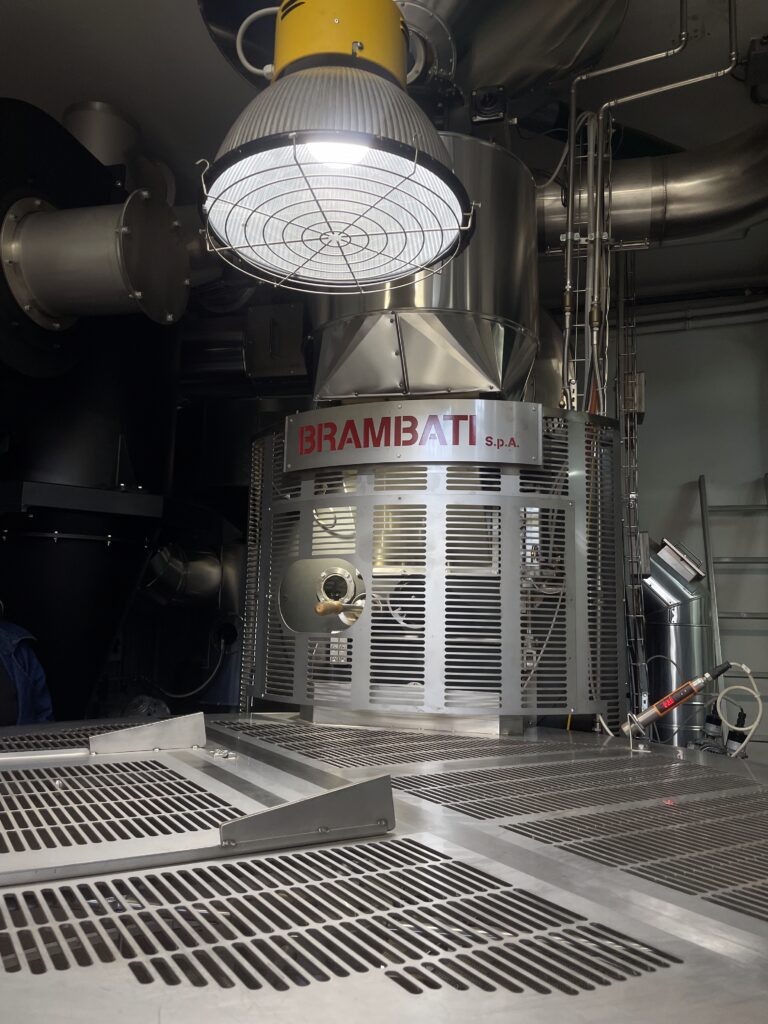
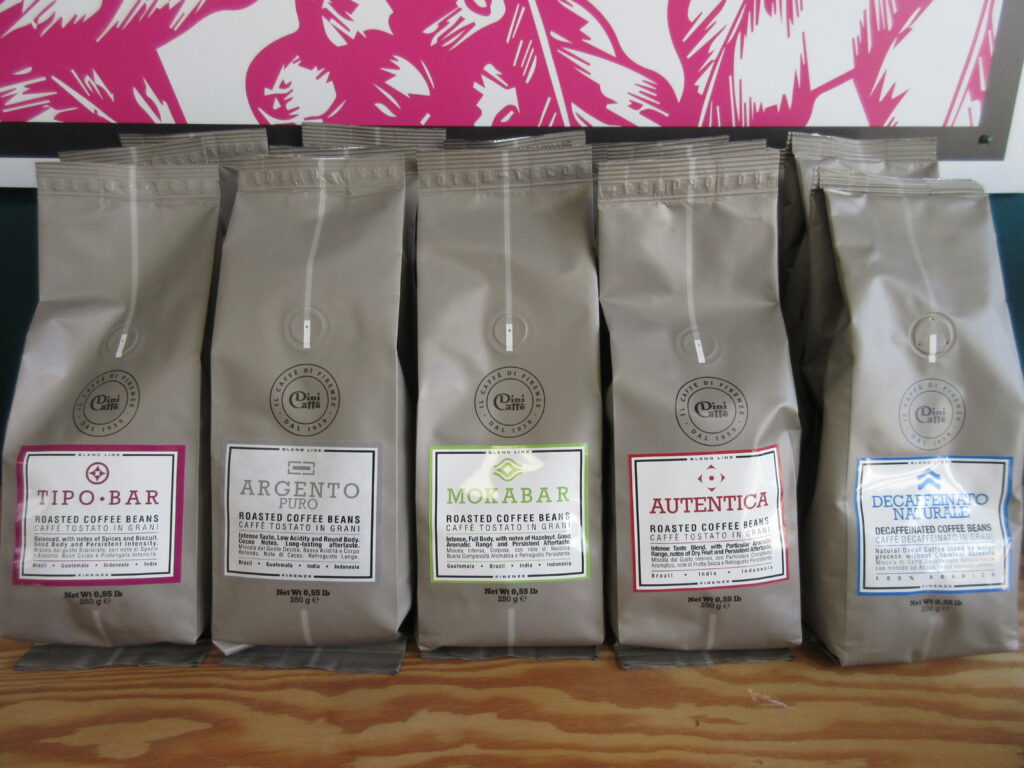
Tour Experience:
Our tour of the roastery was orchestrated by Serena herself, which was incredibly immersive. We started in the basement, which was stacked with bags of coffee beans, and were given the presentation on the process of roasting coffee prior to the tour.
After the presentation, we were taken to where the magic happens, the roasting machine. We were informed that the machine that Dini Caffe recently purchased would have been considered an alarming investment for other brands, but Dini Caffe, committed to their quality, successfully transitioned to a Brambati roaster.
After seeing the roaster, we were taken to a room where the beans are divided and we were shown a machine that Benedetta, the sister who doubles as a coffee expertise and an engineer, invented to suction the beans and make their transportation easier. It was fascinating.
We then had the pleasure of seeing a separate machine specifically for the packaging, which is designed by Serena, who has experience is digital design.
Finally, we were taken to the café on the top floor, where everyone apart of the tour group divided into teams and we were prompted to guess different coffee flavorings based on their scents. As a reward for all our attempts, Serena made us each a cup of espresso and some cappuccinos to try using their signature blend. These cups were delightful and distinguished the difference between bad coffee and what good, quality coffee should taste and feel like.
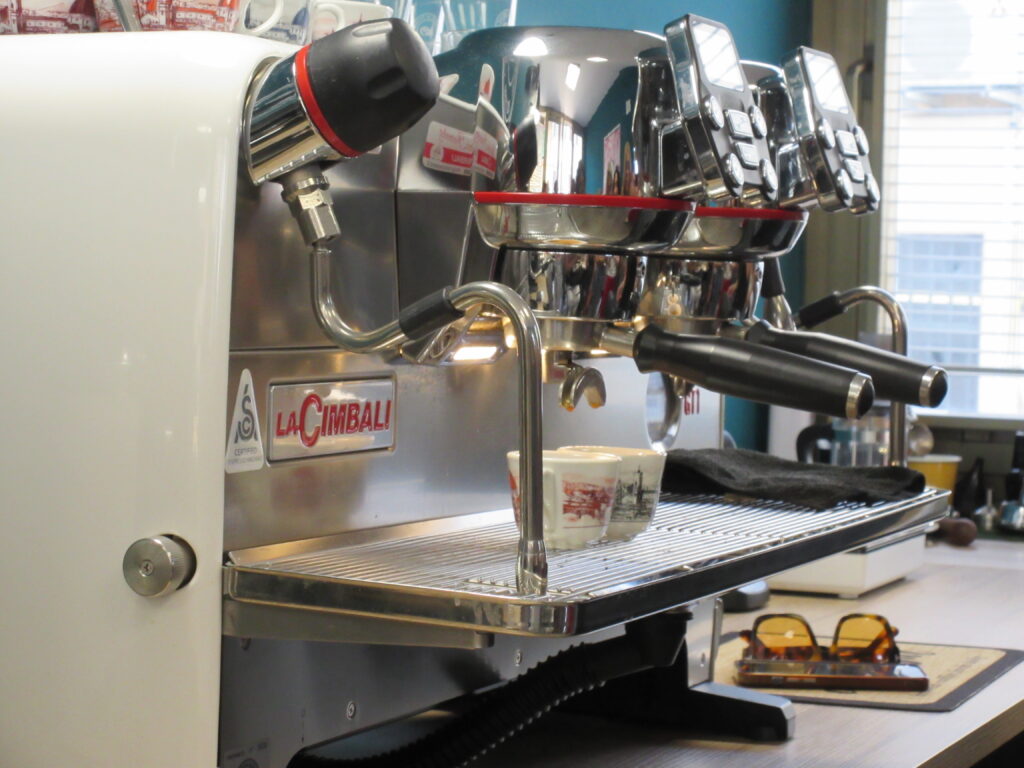
Coffee Closings:
If you are ever in Florence and are passionate about your morning cup, I would absolutely recommend this experience. Even if you aren’t so passionate about coffee, perhaps a look into the world of an authentic, Italian roastery might change your mind, or perhaps a taste of Serena’s inviting, aromatic espresso. I was so lucky to engage in this tour, and it really opens your eyes to the detail that goes into making something that some of us rush through every day to wake ourselves up. Delicate coffee like Dini Caffe’s should be enjoyed and appreciated to its fullest extent.
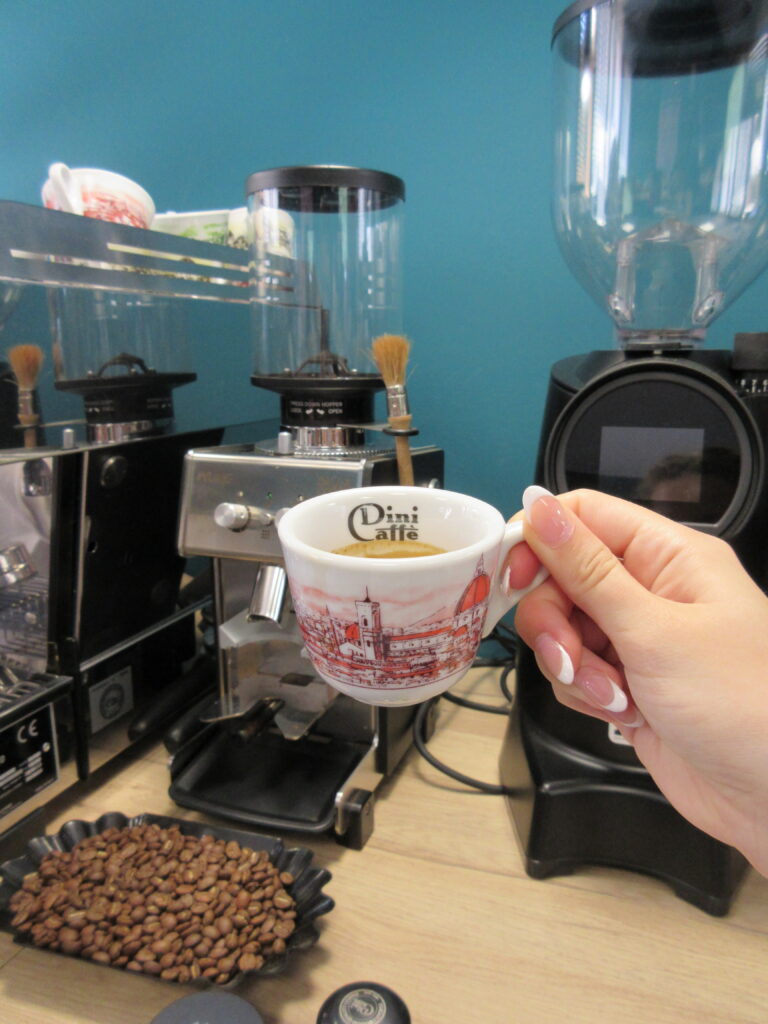
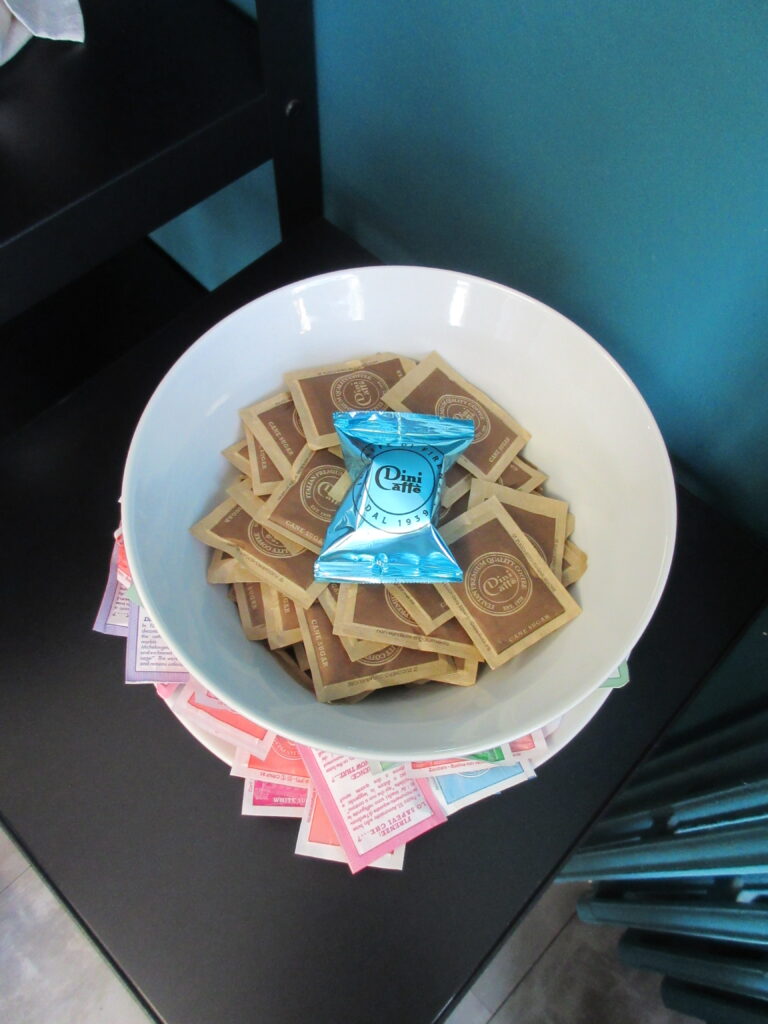
Written by: Elizabeth Kiczuk
